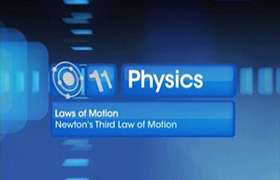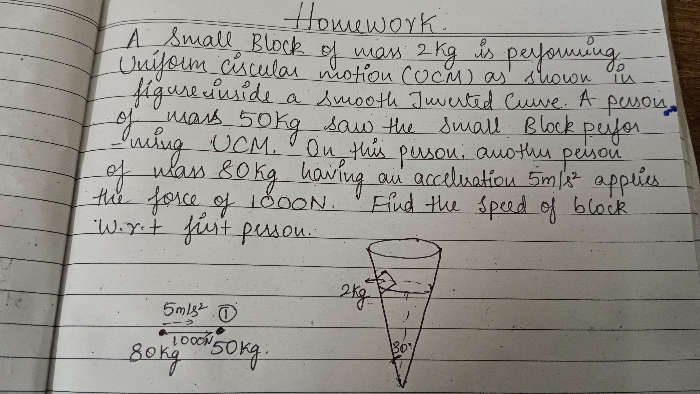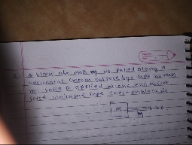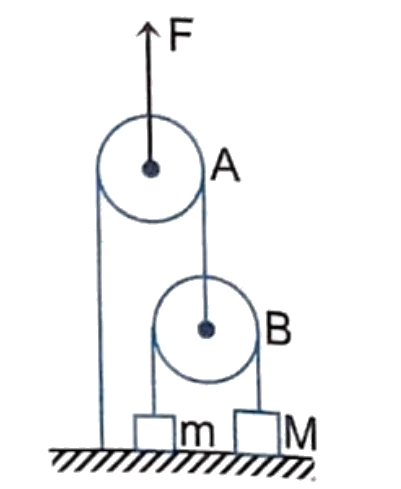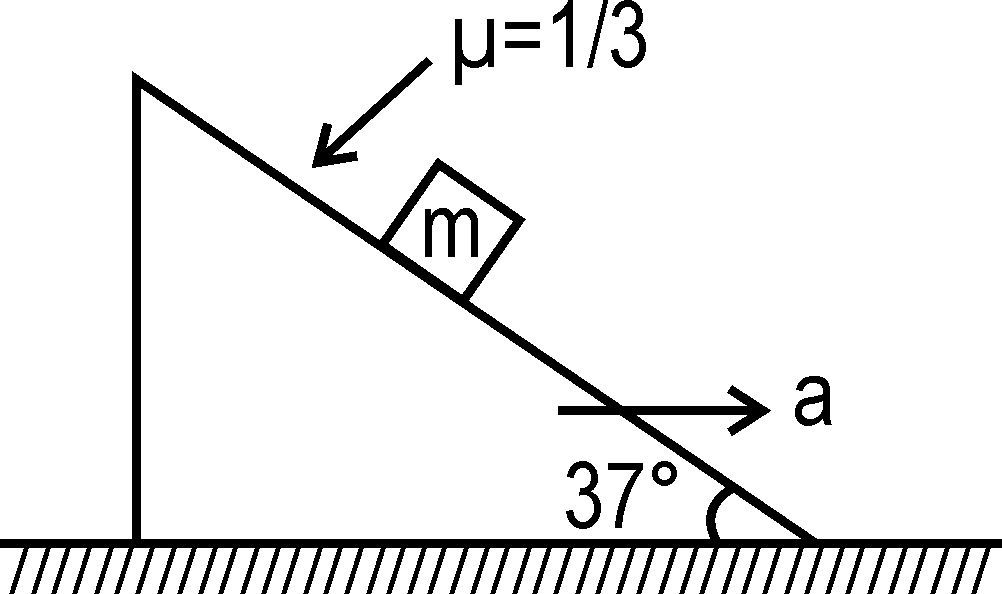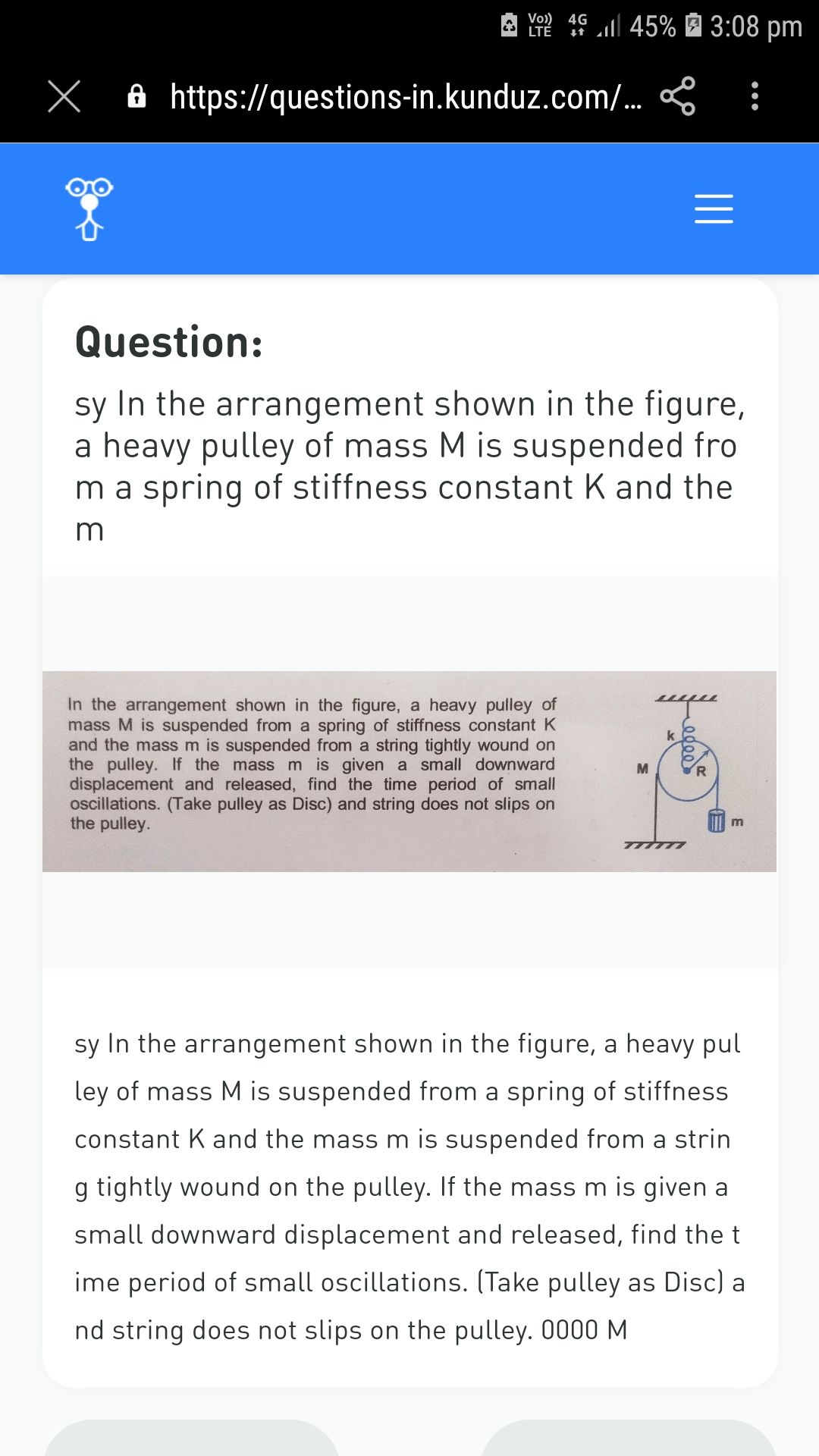CBSE Class 11-science Answered
Following are the solutions to your queries:
1.
Let angle of string with vertical be θ.
T is the tension in the string.
Resolving T along Y and X axis and as per Newton’s 2nd law we get :
T cos θ = mg
hence T = mg / cos θ
Along horizontal axis :
T sin θ = ma where acceleration a = g / √3
Substituting :
mg tan θ = mg / √3
tan θ = 1/ √3
hence θ = Π/6
2.
Let the initial velocity tangent to the surface of the sphere be u . Object is at point A at the top of sphere. O is the center of the sphere.
Object detaches from the surface at point P on the surface which is vertically at a distance d below A.
Radius of the sphere is = r
Angle between OA and OP = θ
Velocity when the object detaches from the surface of sphere = v.
Force along the direction of the normal to the sphere surface = F.
There is no friction.
d = r - r cos θ = r ( 1 - cos θ )
Resultant force towards the center of the sphere (normal to the sphere surface at P ) is equal to centripetal force.
Hence
mg cos θ - F = mv2 / r
When the object detaches from the surface of sphere, F = 0.
Hence
mg cos θ = mv2 / r
r cos θ = v2/g (I)
Applying conservation of energy :
1/2 mv2 - 1/2 mu2 = difference in potential energy at 2 points.
1/2 mv2 - 1/2 mu2 = mgr - mgr cos θ = mg r( 1 - cos θ )
Hence
r - r cos θ = 1/2g * (v2 - u2) (II)
r - v2/g = 1/2g * (v2 - u2) using (I) and (II)
r + u2/2g = 3/2g * v2
v2 = 2g/3 * ( r + u2/2g) (III)
Now
d = r - r cos θ = r - v2/g . . . as per (I)
Substituting v2 as per (III) :
d = r - 1/g * [ 2g/3 * ( r + u2/2g ) ]
= r - 2/3 (r + u2/2g) = r (1/3 - u2/3gr)
Hence
d = r/3 (1 - u2/gr)
If initial velocity u =0,
d = r/3.
Height = h = 2r - d.
cos θ = (r-d) / r
We hope that clarifies your query.
Regards
Team
Topperlearning



